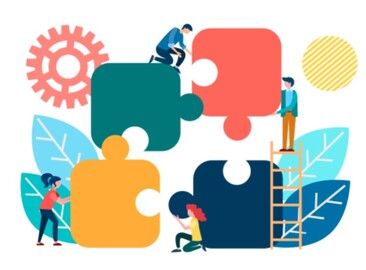|
Social innovation aims to respond in an innovative way to the needs of society by building new relationships between the public, private and associations. Social Innovation can be regarded as an economic model, in most cases it is a hybrid, a combination of profit and no profit where both the economic sustainability of the project and its recipients count. There are various examples of social innovation, from micro-credit projects devised and promoted by the Nobel Peace Prize-winning economist Muhamad Yunus to technologies that can help those at a disadvantage. In practice, social innovation is expressed by responding in a new way to the needs of the emerging or already present society and building new relationships between the public, private sector and associations. More specifically, social innovation is related to the analysis of the context and the actors of reference, as well as a good use of available goods (promoting more efficient use of resources and, where possible, a reduction in their use); generates change especially in the long term; often uses technologies (even if they are not necessary and sufficient components) as levers on which to force to promote and/or disseminate news. Social Innovation projects can arise from many aspects, to mention just a few examples: the occurrence of a crisis, the need to reduce, for example, spending on or improving public services; but also from the analysis of the data collected from users of a solution already adopted, of technological evolution and so on. Once the field of action has been identified, the diagnostic process starts, that is, the acquisition of the data necessary to analyse the links between the factors that can explain why situations need to be improved. Social innovations must be made to grow and spread: often it happens by emulation, but mostly their adoption is determined by processes of interaction and modification because the same innovation will take different forms depending on where it was grafted. Governments also represent, or should represent, clients of social innovation. The final stage that characterises social innovation is the change in reference systems and this is especially true for those great innovations that have radically transformed some aspects of common life. Platforms and infrastructure help to achieve this (think of networks, building large databases to share information, etc.), but also training and involvement of the general public and regulatory push. The protagonists that revolve around these phases are the people, the organizations and the spaces that allow to carry on the innovation in this area. The individuals, or networks of individuals or organizations that present emerging ideas as well as users to buyers; we can then refer to the Hunters of innovations (dealing with discovering the innovations that can be adopted or replicated in their own reality); to the champions of innovation, mostly consultants; social entrepreneurs who work in large companies to develop practical solutions in response to social challenges and, again, social entrepreneurs in residences, that is called specifically to develop potential. We should also talk about teams for innovation, or those realities that encourage collaboration between different organizations and that are particularly useful especially if they are multidisciplinary. To do their part to support innovation and act as a connecting element between the various players involved, must be the Innovation Centres, that is, areas of aggregation where skills can be shared, and institutions. Examples of centres sharing expertise are CAN Mezzanine in the United Kingdom, Social Fusion in the United States and Hub in 12 cities across 4 continents, or the Centre for Social Innovation (CSI) a social enterprise with the aim of catalysing social innovation in its Toronto base and in the world, but also smaller realities. Examples of social innovation institutions are: the Department for Business, Innovation and Skills (BIS) in the UK, or the Office of Social Innovation (OSI) at the White House, as well as the NESTA itself or the Sitra in Finland. Author Partners @i2 SustainIT |
AuthorWrite something about yourself. No need to be fancy, just an overview. Archives
December 2021
Categories
All
|


 RSS Feed
RSS Feed



